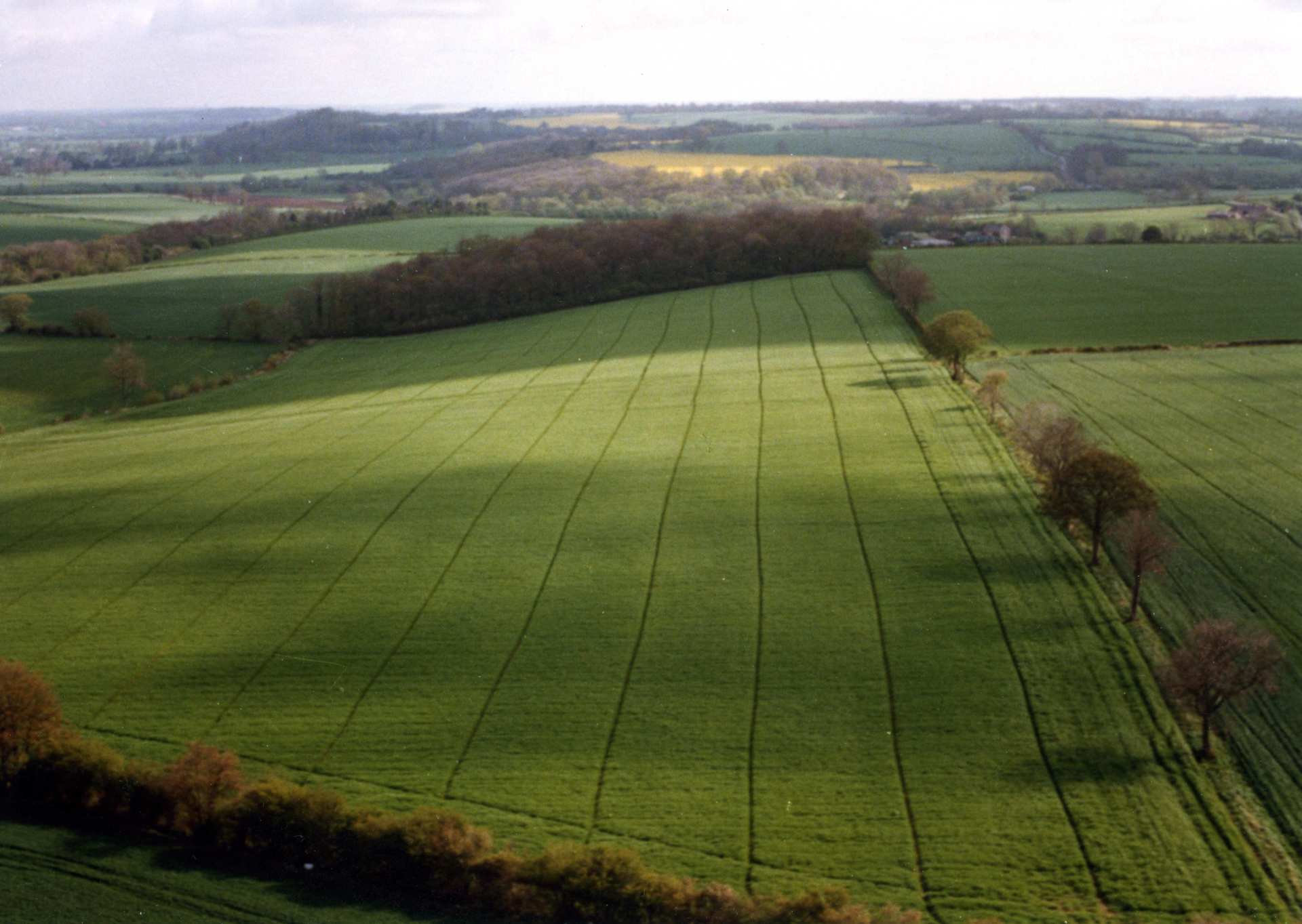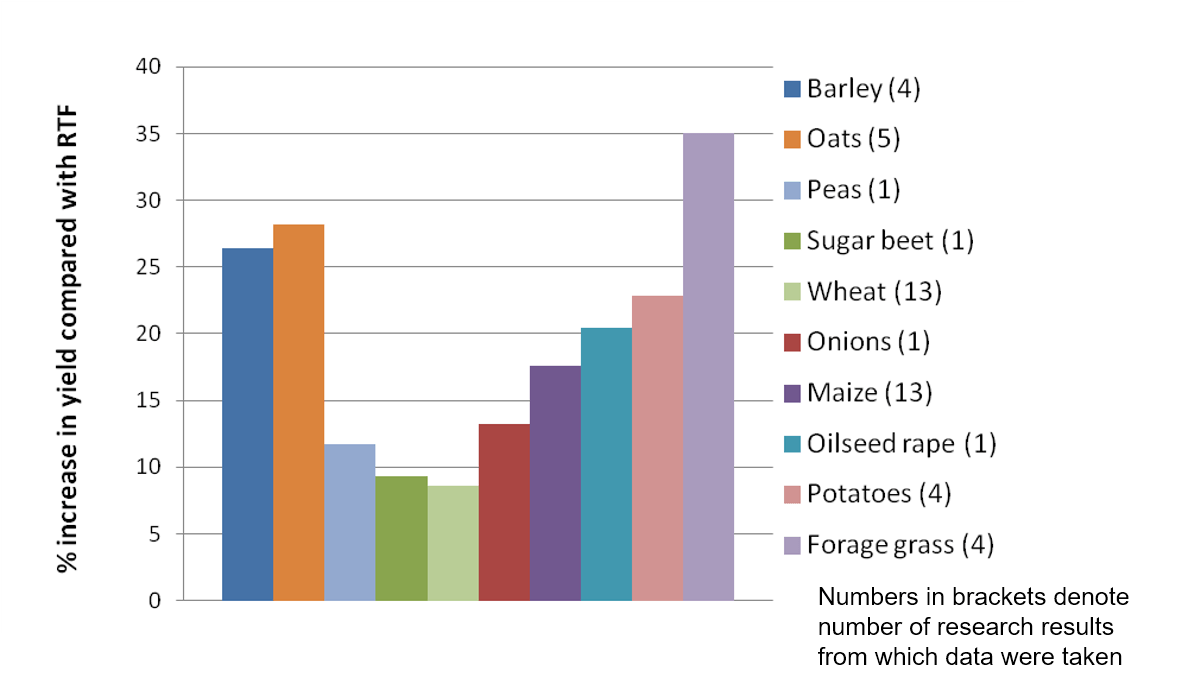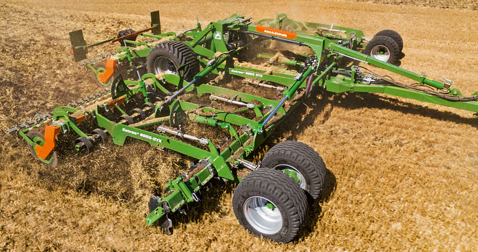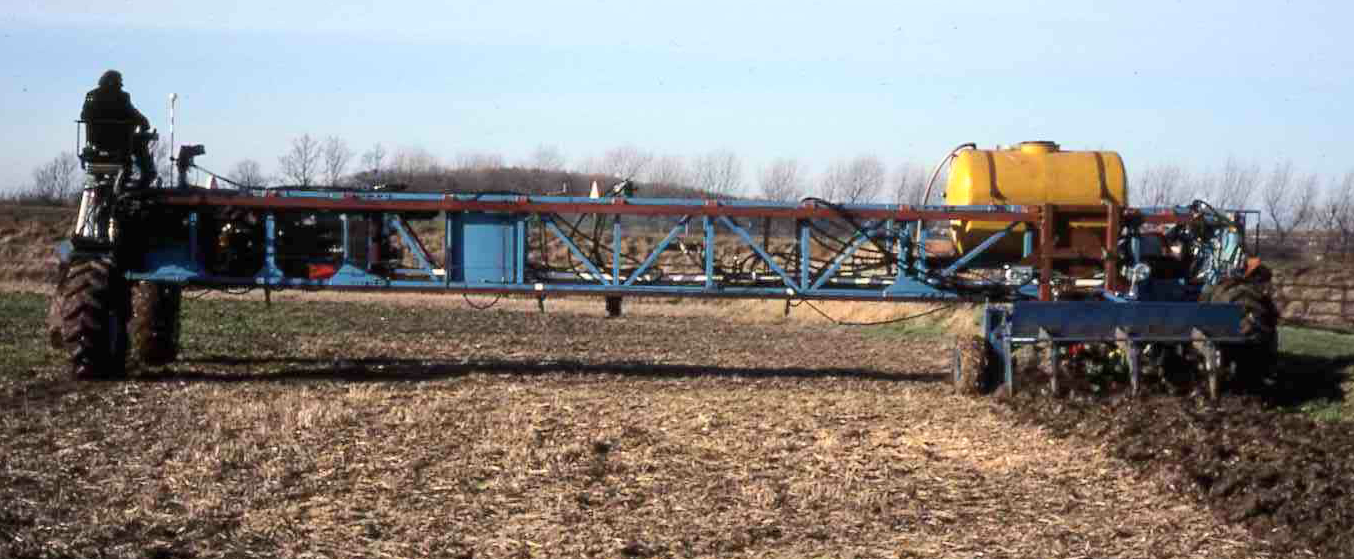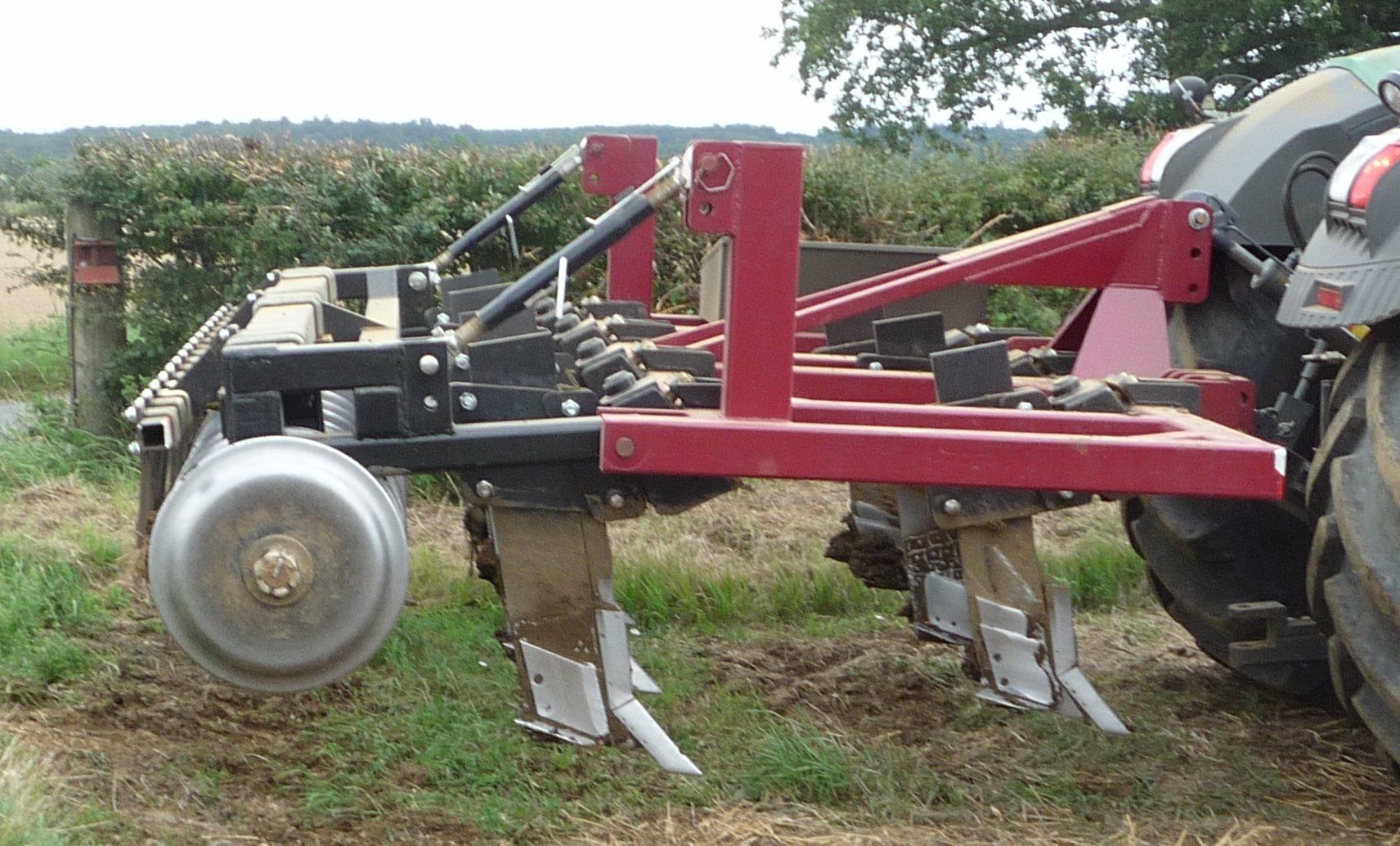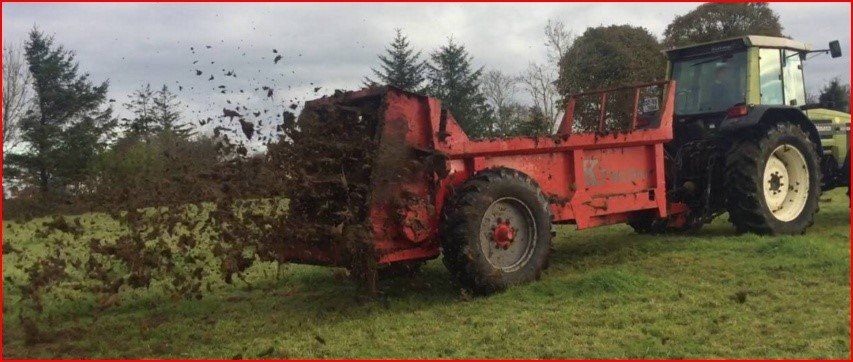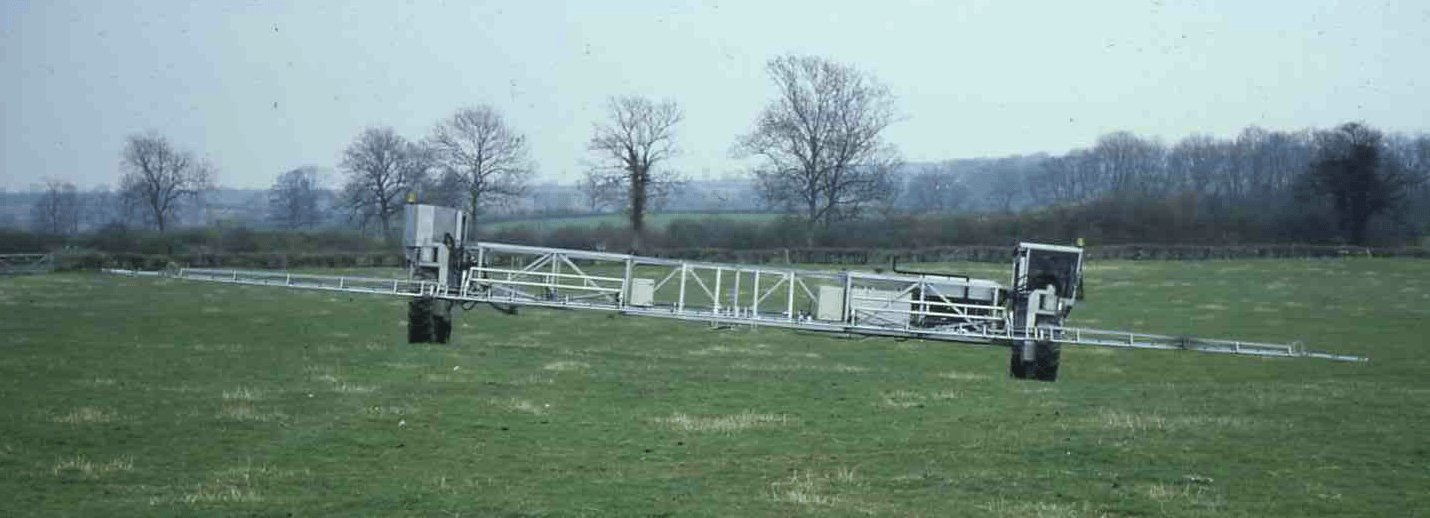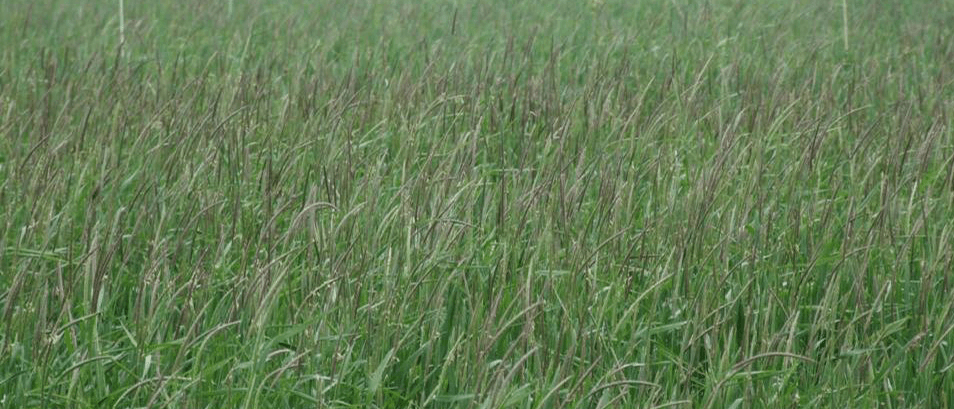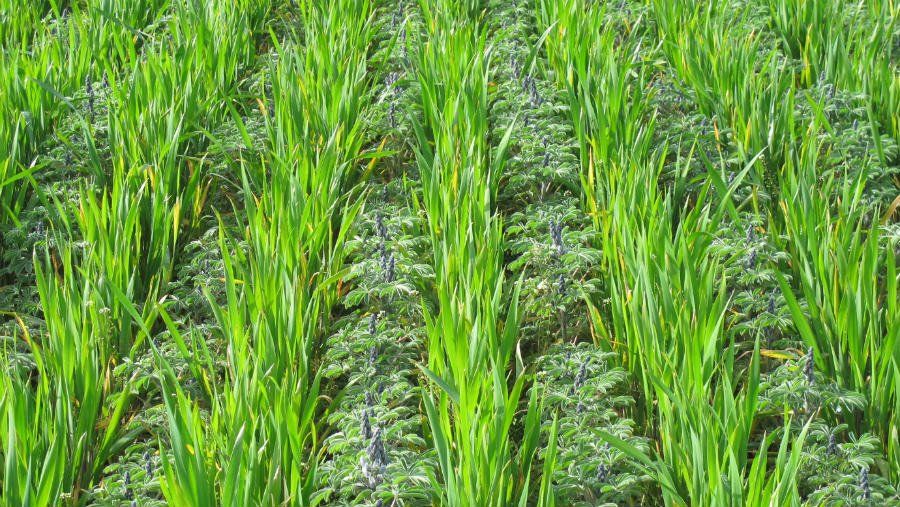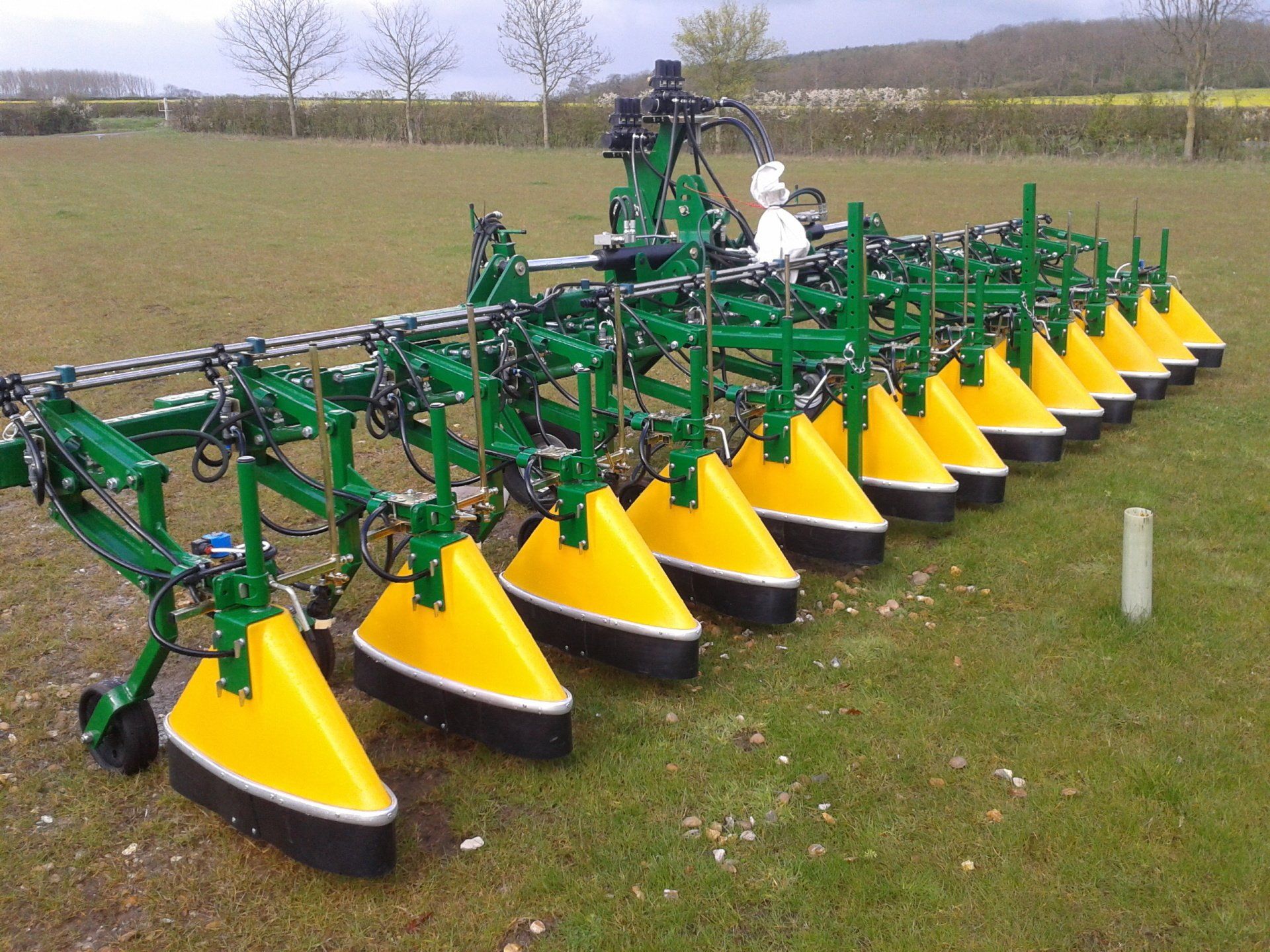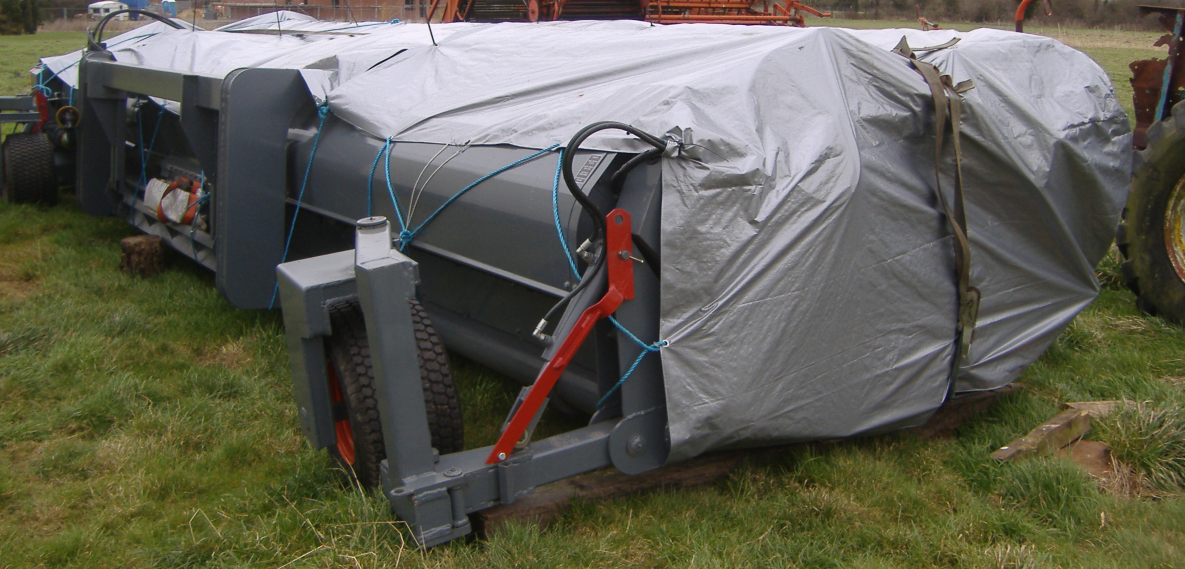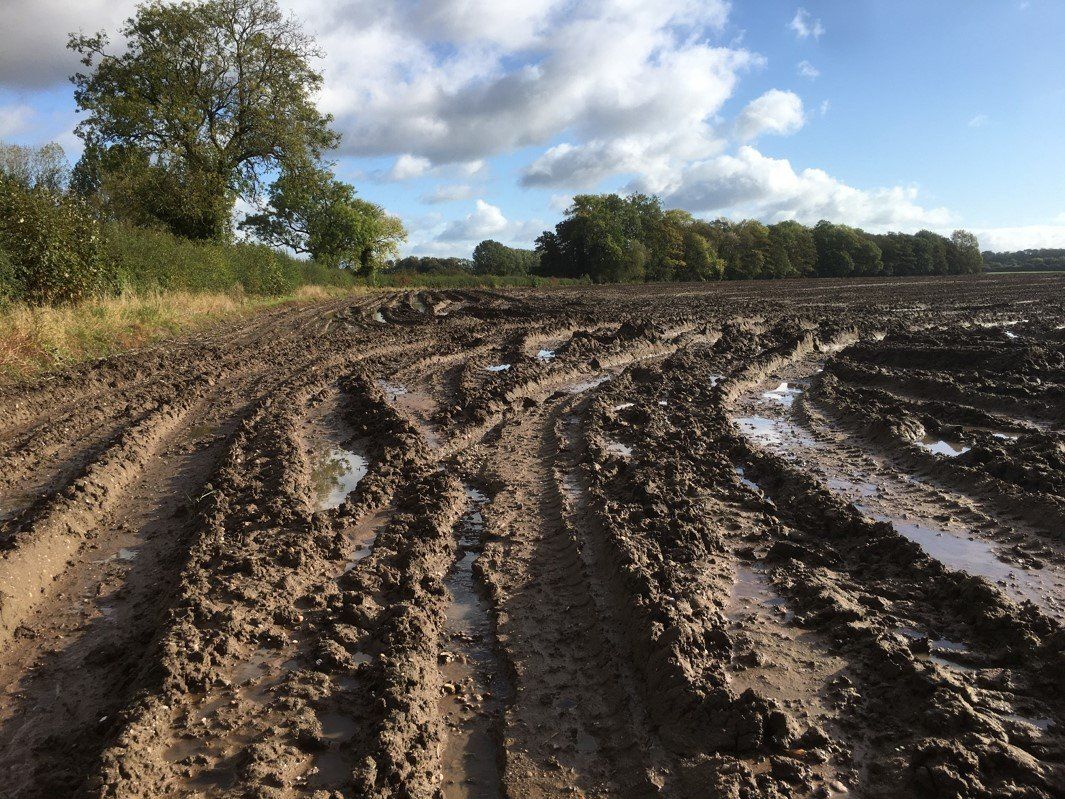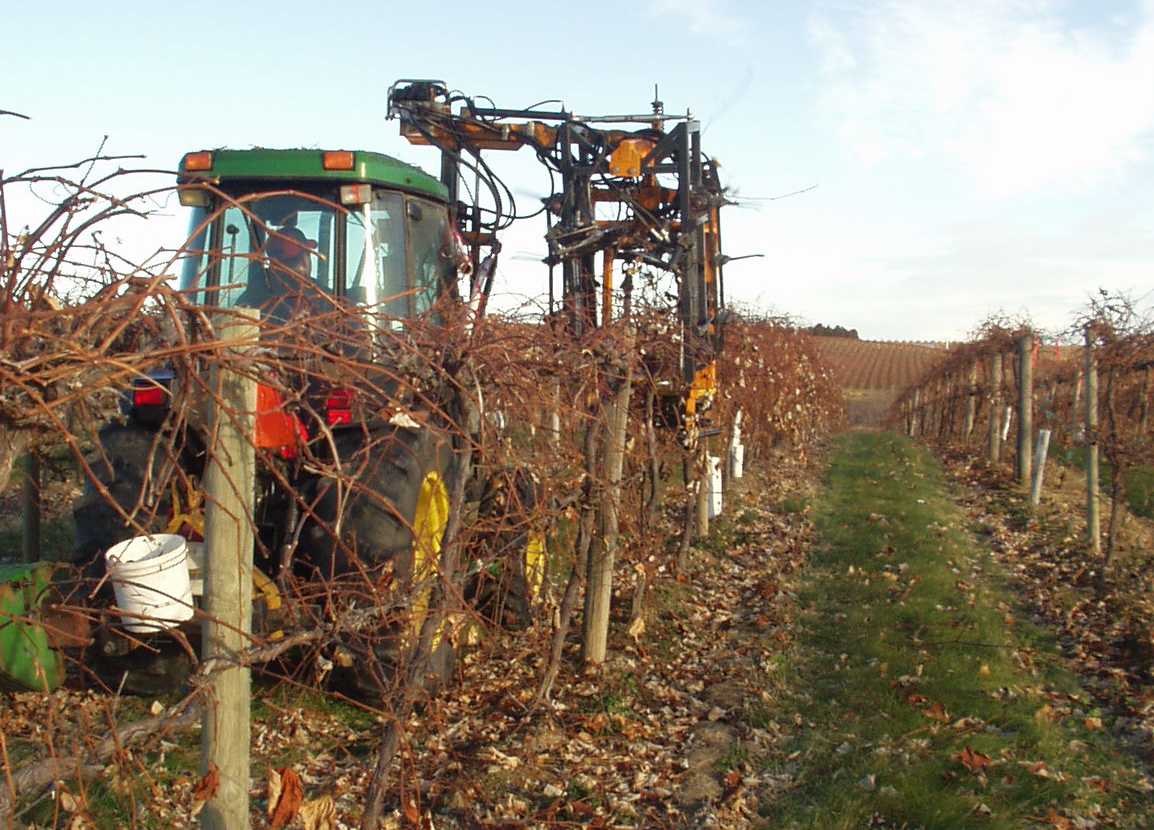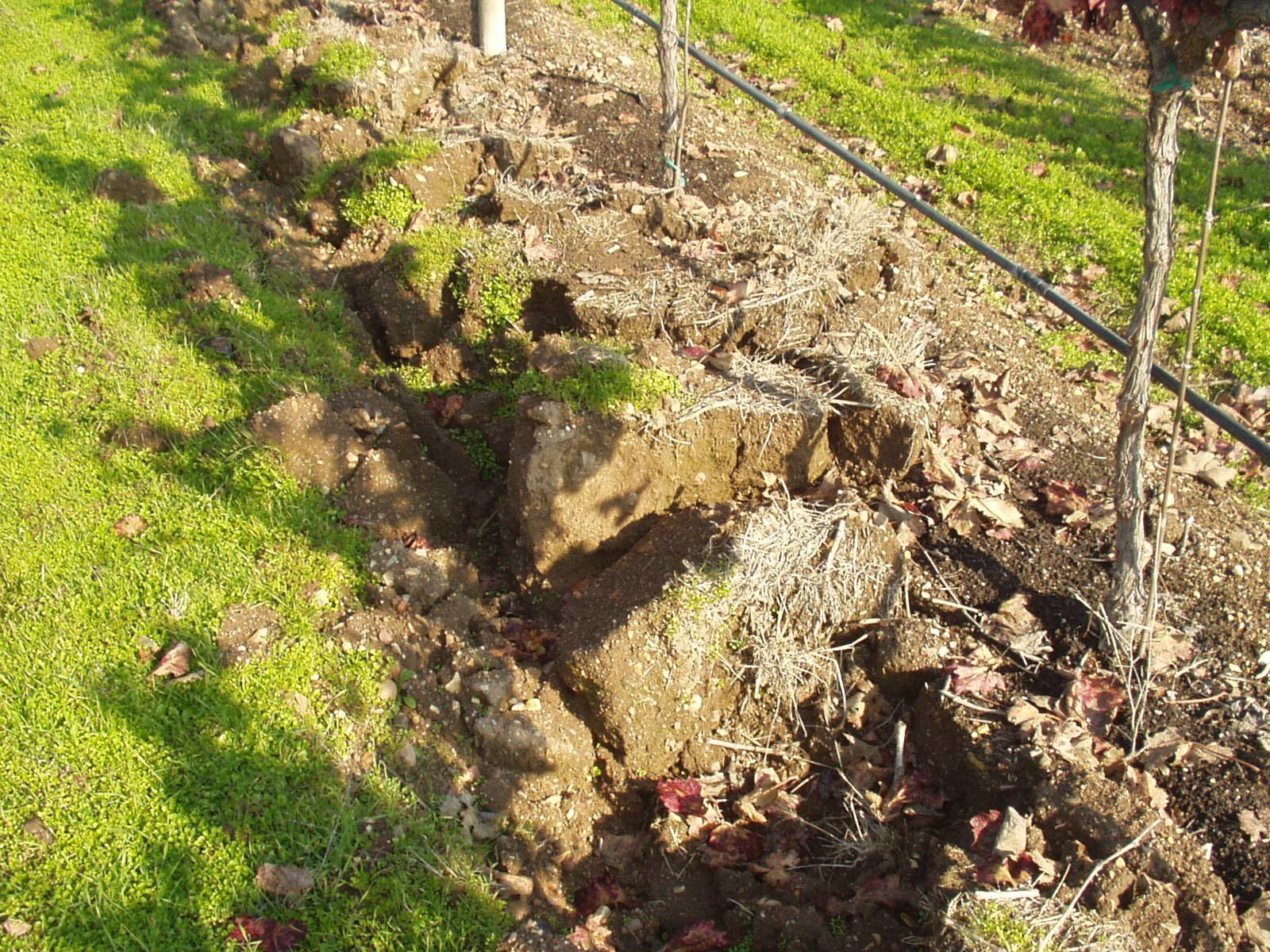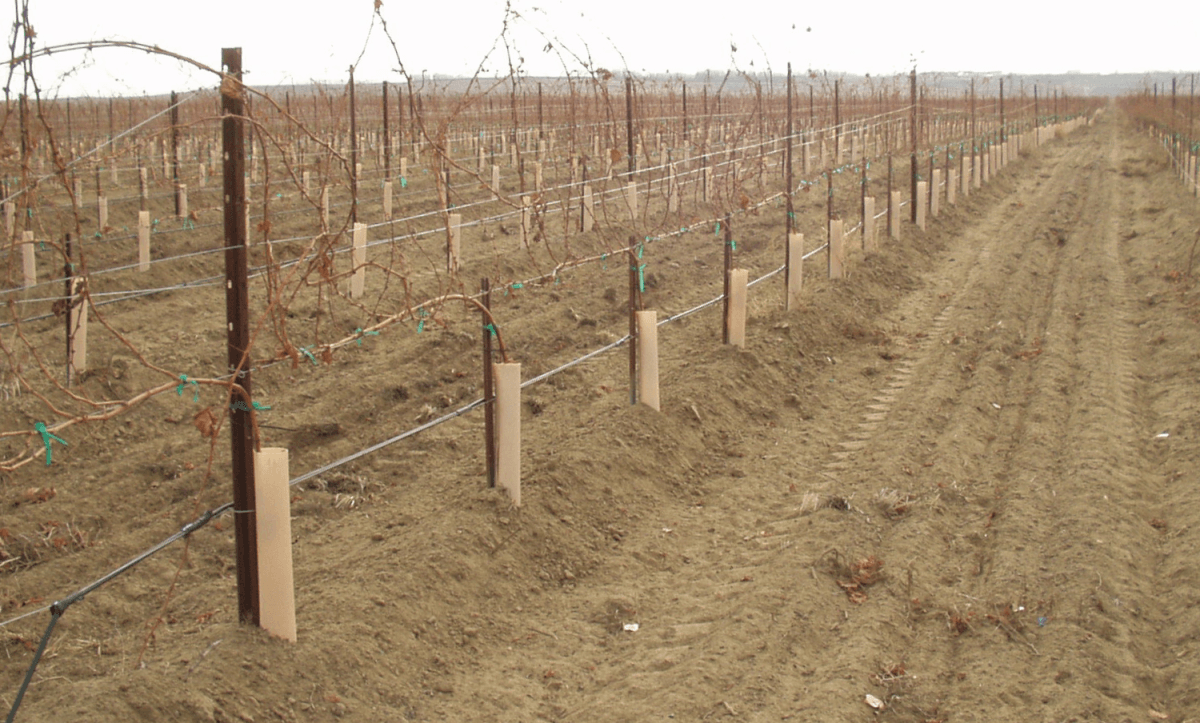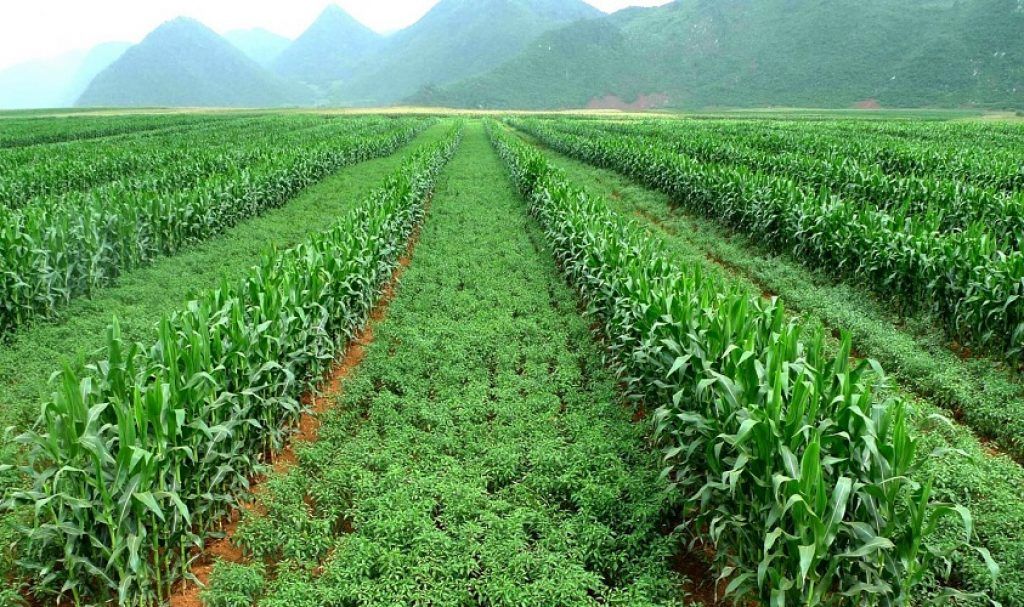The benefits of gantry or wide span tractors for food & fibre producers
Gantry tractors have some unique benefits, mostly related to the stability provided by their wide track and the minimal amount of soil they run over. These benefits impact on all aspects of the food and fibre chains, right from the primary producer to the end user. It is helpful therefore to identify these benefits for different parts of those chains .
Benefits for the farmer/grower
Savings in fuel use
- The farmer should achieve a minimum of 35% reduction in fuel use for crop establishment. This is because the energy needed to create a seedbed is closely associated with how much the ground is driven over, how often, when and by how big a machine and its running gear. With the gantry tractor system, well over 90% of the soil is never driven on, ever!
- Fuel is also saved because the machine is always running on firm traffic lanes, i.e. the losses associated with rolling resistance are much reduced.
- A 20% reduction in operating costs is envisaged, components of which are:
- Less costly machines. Most of the components of a gantry tractor are "off the shelf", whether they are hydraulic or electric motors for the primary drive or for services pumps and/or motors. A lot of the other main components can be fabricated, such as the main spanning beam which can be divided into manageable sections. Fabrication also means that no great investment is needed in castings or other unique components. The driver's cabin may well be customised but the control system will be unique and programmed for whatever width of machine is being built.
- Less duplication. A gantry tractor can be considered to be a wide span tool carrier, meaning that the same base vehicle is used for a multitude of tasks (other than for chemical applications, which will require a dedicated machine on most farms). This provides considerable savings in terms of duplication, e.g. engines, transmissions, driver's cabins.
- Lower power density. The power rating of most present-day tractors is largely determined by the depth and intensity of tillage needed. Because tillage will be much reduced or avoided and implements much lighter, the power per unit area will only be around 50% of that on conventionally farmed land.
- Research from around the world over a period of many years has shown that practically all crops respond positively if machinery traffic is removed from the cropped area. Yield increases have ranged from 8% to 35% compared with conventional practice and will be optimised by a gantry system that delivers a higher proportion of non-trafficked soil.
- Lightweight.Tractor drawn or mounted implements tend to be heavy, and therefore costly, due to high draught loads transmitted through a central pulling point. They also often need complex, heavy and costly folding systems, as demonstrated in this video. The wide span system supports and pulls implements at several points across its working frame and implements can therefore be relatively light and cheap and often don't need folding for road transport.
- cultivators can also be lighter because non-trafficked soil requires less pull for a given depth of work;
- shallower working cultivators can be used because deep soil repair is not needed;
- because the soil is not compacted by traffic, less tillage is needed to create a seedbed.
- Little need for subsoiling.Because there is no traffic on over 90% of the soil, there is little need for deep soil repair, even on the headlands where additional trafficking is minimal. Not only is there a large operating cost associated with subsoiling but there can often be a significant “decision” cost, for example, does this field need subsoiling and if so, at what depth and is the soil at that depth at the right moisture content for the operation to be effective?
- Folding.Many conventional machines need to fold for road transport, whereas those on a wide span vehicle can often be accommodated within its road width.
- Materials distribution.
- Conventional equipment often requires costly distribution of materials from a central point – e.g. air seeders. This can be avoided on a wide span vehicle because the material (e.g. seed, fertiliser) can be gravity-fed to outlets closer to the ground and therefore also less prone to inaccuracy.
- Organic materials (e.g. farmyard manure) can be spread more accurately and with less energy, simply being metered from a full-width tank to fall under gravity. Slurry can also be spread more efficiently and with less risk of ammonia emissions because of easier injection.
- No need for wheel track eradicators
- As will be seen from the video above, cultivators and drills in conventional systems are often fitted with wheel track eradicators. These add cost, weight and draught but will not be required with gantry systems.
Because a wide track vehicle sets out its own grid of traffic lanes as part of the driving process, the need for satellite or other guidance systems is less acute. It is also the case that in the event of failure of an installed satellite guidance system, the wide track vehicle can continue working with manual input, albeit with less accuracy.
Part-width operations
With standard tractor-based CTF systems growing grains or pulses, subsoiling or ploughing can only be achieved with sub-width machines, meaning that the non-trafficked beds are compromised. A gantry tractor on the other hand can use any width of implement without compromising the non-trafficked beds. This is because an implement can be part-width and located at any point on the vehicle frame without making the vehicle unstable. Lateral indexing on a sliding frame ensures that the whole bed can be covered, albeit in several passes but with no extra tracking on the field. These operations can be carried out on any scale (width) appropriate to the power and traction available.
This is particularly valuable for ecological/organic farmers who may not be able to maintain a CTF system when subsoiling or ploughing for example.
Machine stability
A wide track vehicle is significantly more stable than a conventional tractor in the lateral plane. This is a major advantage for a number of tasks, including chemical applications and certain harvesting operations. An example of the latter is asparagus where mechanised systems must work very precisely if crop damage is to be avoided.
With increasing legislation around chemical use and the loss of many selective herbicides through resistance, alternative weed control strategies become increasingly important. The gantry tractor is particularly suited to this scenario as described below:
A wide track vehicle is significantly more stable than a conventional tractor in the lateral plane. This is a major advantage for a number of tasks, including chemical applications and certain harvesting operations. An example of the latter is asparagus where mechanised systems must work very precisely if crop damage is to be avoided.
- Chemical applications. Unlike conventional tractors, the gantry tractor is inherently stable and has excellent across-slope capability. The latter ensures that wide application booms remain parallel to the ground, while the steering system allows the wheels to be steered uphill fractionally to offset any tendency for the vehicle to stray downhill.
With increasing legislation around chemical use and the loss of many selective herbicides through resistance, alternative weed control strategies become increasingly important. The gantry tractor is particularly suited to this scenario as described below:
- Delayed drilling of crops. Blackgrass is a major weed in the UK and other European countries and is being targeted through delayed drilling. This means farmers have a greater length of time to allow the weed to germinate and to spray it off with non-selective herbicides prior to drilling of a crop. Such a strategy is risky in seasons when rainfall is high and may preclude field access when needed. As the gantry tractor can easily achieve a tracked area of less than 10%, it is economically conceivable that these traffic lanes could be excluded from cropping and engineered to provide year-round access. Couple this with improved infiltration and drainage on non-trafficked soil and there is a greater likelihood that drilling can proceed when other systems might be challenged.
- Inter-row weed control. Precision is key when carrying out inter-row operations to control weeds, whether they involve non-selective spraying, tillage or perhaps “flaming”. The gantry tractor offers the perfect platform for such operations, having lightweight implements with low inertia, easily linked movement across the full width of the machine and a high degree of stability.
- Stale seedbeds. This technique, which involves cultivation to achieve a seedbed well ahead of a crop sowing date, is used to prompt weed seeds to germinate so they can be sprayed off or cultivated out. On non-trafficked soil, a seedbed can be achieved with less cultivation and loss of moisture, meaning weeds are more likely to germinate. Although this is not unique to a gantry tractor system, it is effective over a larger cropped area.
- Precision growing systems. Because optimum seedbeds can be more reliably produced, crops can be sown at a lower density, closer to the optimum for rapid establishment and healthy growth. This lower density is likely to reduce disease pressure and in the case of cereals, ensure a sturdy crop. Strong straws keep the crop standing and following harvesting (which may only remove the top portion of the stem, see below), new crops sown between these straws (brassicas for example) will have greater protection from bird damage.
Grains and pulses.
Devising harvesting systems for the gantry style of vehicle is probably one of the biggest challenges, but equally one of the greatest opportunities for change. The configuration of combine harvesters for example, has remained largely unchanged since they were introduced, but they have now developed to such a scale that they pose a number of challenges. Their cutting width means that very large volumes of material have to be squeezed through a threshing system which remains constrained by the road width of the vehicle. Equally, spreading the residue evenly becomes increasingly difficult and “power hungry”, meaning that the overall energy efficiency of the modern combine has actually decreased slightly compared with its ancestors. The cost of these vehicles has also rocketed, albeit with additional automation and control systems countering some of the inefficiencies and improving driver comfort.
The Eyre header
has the potential to bring about radical change, dropping power consumption dramatically as well as cost. It also alters the concept from a solely self-propelled machine to something that could be used as an implement attached to a tractor. The new design of header deals very simply with the spreading problem by not concentrating the material in the first place, just threshing and ejecting it “in line”.
Using a cutting platform such as the Eyre header not only improves the efficiency of harvesting, it is also the ideal system to use on a wide span vehicle.
A number of advantages and innovations can be realised through gantry tractor or "wide span" technology, namely:
- More efficient grain stripping should also be achievable. A wide span vehicle enhances the stability and precision of height control which is critical when using a stripping rotor. Equally, the straw left by the stripper is not compromised by wheels and can be left standing for an extended period if required.
Changing the way we harvest root crops is a major opportunity for improvement. Existing systems create enormous damage to the soil by virtue of their wheel configurations which can mean that over 100% of the soil is trafficked during this one operation. Soil compacted in this way results in an increase in dirt tare on crops such as sugar beet and potatoes and also increases the difficulty of separation. More amenable soil conditions create opportunities from start to finish of the cropping cycle, cutting down on input costs and improving overall efficiency.
However, significant alteration of existing machinery will be needed and customisation to the gantry tractor concept, but as with grain crops, the stable spanning beam provides opportunities for greater precision and a “light touch”. It is likely that managing root crops will be on a narrower gauge than with cereals and pulses and if growing both (which is very common) the logical width would be half that of the wider gauge. Thus a 12 m system would operate on 6 m for root crops, the latter probably being the widest practical for potatoes. With carrots, the limited width harvest heads would probably need to be on a cross-slide to achieve harvesting across the full 6 m bed width.
However, significant alteration of existing machinery will be needed and customisation to the gantry tractor concept, but as with grain crops, the stable spanning beam provides opportunities for greater precision and a “light touch”. It is likely that managing root crops will be on a narrower gauge than with cereals and pulses and if growing both (which is very common) the logical width would be half that of the wider gauge. Thus a 12 m system would operate on 6 m for root crops, the latter probably being the widest practical for potatoes. With carrots, the limited width harvest heads would probably need to be on a cross-slide to achieve harvesting across the full 6 m bed width.
Gantries in viticulture
Traditionally vines have either been tended by hand or latterly with machines. Although machines have reduced labour inputs and costs considerably, they have also introduced constraints. Vine inter-row spacing for example is now often determined by the narrowest machine that can be fitted between them and this means that row spacing is often wider than is optimum for sunlight interception, which is between 1-1.5 times the height of the leaf canopy. Equally, machines will inevitably be compacting the soil immediately alongside the vines, creating unfavourable growth conditions as well as poor water infiltration in the root zone. A gantry would avoid this by operating in the mid-space between rows and only influence two rows every span, equating to about 18% of the vines rather than 100% with existing systems. There are numerous other benefits, these associated with the machine’s greater stability, flexibility in operating width, inter-row management and more favourable soil conditions overall.
The opportunity to Introduce gantries to vineyards is only likely to be feasible when the trellis system is changed, which might be on a 25-year rotation. However, the gantry offers major benefits during this construction phase, allowing for example deep ripping within the production zone without any accompanying compaction. Designed appropriately, it would also allow transportation and installation of the trellis infrastructure with no soil damage, whether it were installed manually or mechanically.
Traditionally vines have either been tended by hand or latterly with machines. Although machines have reduced labour inputs and costs considerably, they have also introduced constraints. Vine inter-row spacing for example is now often determined by the narrowest machine that can be fitted between them and this means that row spacing is often wider than is optimum for sunlight interception, which is between 1-1.5 times the height of the leaf canopy. Equally, machines will inevitably be compacting the soil immediately alongside the vines, creating unfavourable growth conditions as well as poor water infiltration in the root zone. A gantry would avoid this by operating in the mid-space between rows and only influence two rows every span, equating to about 18% of the vines rather than 100% with existing systems. There are numerous other benefits, these associated with the machine’s greater stability, flexibility in operating width, inter-row management and more favourable soil conditions overall.
The opportunity to Introduce gantries to vineyards is only likely to be feasible when the trellis system is changed, which might be on a 25-year rotation. However, the gantry offers major benefits during this construction phase, allowing for example deep ripping within the production zone without any accompanying compaction. Designed appropriately, it would also allow transportation and installation of the trellis infrastructure with no soil damage, whether it were installed manually or mechanically.
A 10 m gauge machine is likely to be the optimum with gaps in headland rows to accommodate turning. Single or multiple row pre-pruning machines could be mounted on the gantry and indexed across as could “over the row” harvesting heads.
Strip intercropping.
This is a methodology that grows two or more crops in a field at the same time. With conventional random or controlled traffic methods, cross-contamination of crops during harvesting can only be prevented by introducing a non-cropped strip between the different crops. With a gantry system, this separation is automatically ensured by the bed growing method.
Strip intercropping is useful for many reasons, not least of which are pest and disease suppression, enhancing light interception for unequal heights of crops, botanical diversity and perhaps weed control.
Strip intercropping.
This is a methodology that grows two or more crops in a field at the same time. With conventional random or controlled traffic methods, cross-contamination of crops during harvesting can only be prevented by introducing a non-cropped strip between the different crops. With a gantry system, this separation is automatically ensured by the bed growing method.
Strip intercropping is useful for many reasons, not least of which are pest and disease suppression, enhancing light interception for unequal heights of crops, botanical diversity and perhaps weed control.


